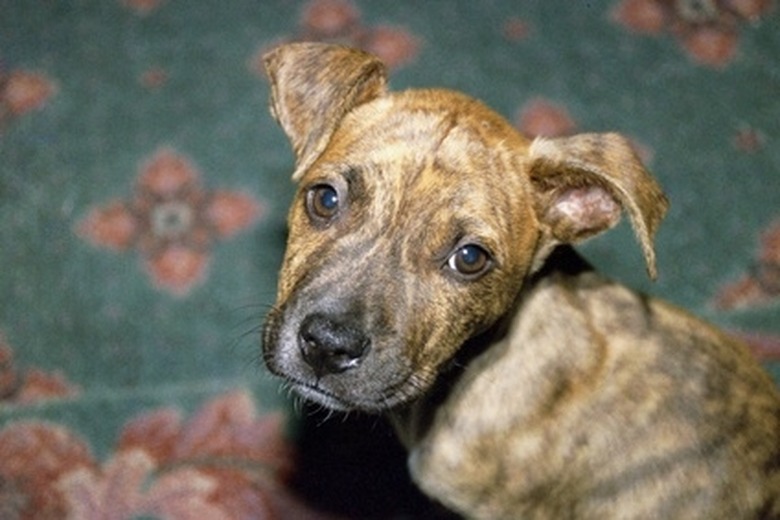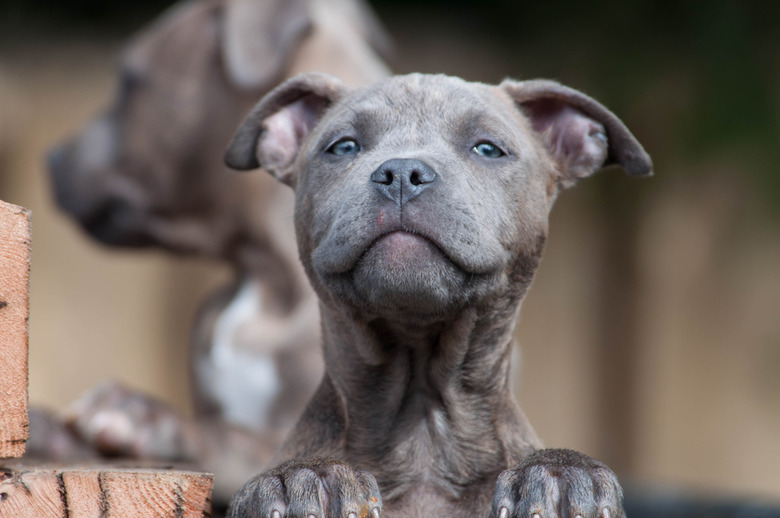How To Potty Train Pit Bull Puppies
Pit bulls are loving dogs who are very loyal to their humans and are quick learners who are eager to please. This makes potty training pit bulls as puppies a breeze but only if you use positive reinforcement training methods and are consistent with your training schedule.
To set up your pit bull pup for success, you'll need to start training your pit bull around 8 to 10 weeks of age. Remember that lots of potty breaks, regular supervision, and positive rewards are important in successfully training pit bull breeds. With consistent training, your pup should learn the ropes of potty etiquette within a few months.
Potty training pit bulls
Potty training pit bulls
The key to successful potty training of any pit bull breed, including the American Staffordshire terrier and Staffordshire bull terrier, is to regularly take out your puppy for potty breaks. Pick a quiet spot outdoors that's away from other dogs, especially if your puppy hasn't yet been properly socialized. Each time you go outside, go to that same spot and give your pup a command, like "potty." If your little one eliminates in that spot, lavishly praise and treat your dog for this accomplishment. Should your puppy not eliminate, head back inside for a few minutes and return to try again.
You'll want to start with taking out your puppy for potty breaks every one to two hours during the day, including every morning, before bedtime each night, 15 minutes after meals and drinks of water, after naps, and once during the night for at least the first few weeks of training. Generally, pit bull puppies can wait the same number of hours between potty breaks as their age in months up to 9 months of age.
Crate training a pit bull puppy
Crate training a pit bull puppy
Part of successfully house training your pit bull puppy involves crate training. The crate provides a safe and secure spot for your dog that's similar to a den in the wild. Because dogs usually won't soil their den, the crate is a great learning aid for potty training as well.
Choose a crate with a divider that can grow with your pit bull, who are generally medium-size dogs as adults. That's because you don't want a crate with too much space that lets your puppy sit away from an accident. Set the crate in an area of the house where you and your family hang out and place a comfy blanket in there along with a few treats so she associates it with good things.
Close your dog in the crate when you aren't around to supervise her between potty breaks and at night but never for more than a few hours at a time. Be sure to move the crate into your bedroom so you can hear her crying if she needs to go potty at night.
Dealing with pit bull accidents
Dealing with pit bull accidents
Remember that accidents are prone to happen with your pit bull puppy. Never punish your dog for any accidents in the home. Simply clean accidents with an enzymatic cleaner to remove the scent that could draw your puppy back to the area again to eliminate.
Between regular potty breaks, if you see your dog circling, sniffing around, whining, or otherwise indicating that he needs to go, take him out immediately to his potty spot. Should you catch your dog in the middle of eliminating indoors, say "no!" to startle him and immediately bring him outdoors to finish. Praise him when he finishes outdoors.
A good way to prevent nighttime accidents is to take away your pup's food and water dishes within two hours of bedtime.
Pit bull exercise needs
Pit bull exercise needs
Pit bulls are generally active dogs who need a good dose of exercise to prevent destructive behavior and accidents in your home. Remember to exercise your dog regularly in addition to providing her with regular potty breaks. A great time to do this is after potty breaks if your dog does her business. This makes the outside time a fun reward for her good behavior and helps with training.
References
- PitBulls.org: Housetraining Your Pit Bull Puppy
- American Kennel Club: American Staffordshire Terrier
- American Kennel Club: Staffordshire Bull Terrier
- American Kennel Club: How to Crate Train Your Dog in Nine Easy Steps
- The Humane Society of the United States: Crate Training 101
- American Kennel Club: How to Potty Train Puppies: A Comprehensive Guide for Success


